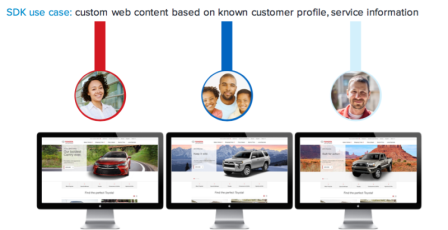New Lytics Personalization promises greater simplicity and sophistication
Platform seeks to help marketers deliver more customized experiences and “make marketing suck less.”

Amid a growing crisis in digital marketing, “personalization” has become a goal that many enterprises see as solution to consumer complaints of “irrelevance.” However personalization is like a unicorn that many are chasing but few have captured.
Customer data management provider Lytics this week introduced a new platform that promises to bring both greater simplicity and sophistication to personalization efforts across channels and devices. The pitch is “personalized marketing right out of the box.”
Lytics Personalization, as the product is called, uses an intuitive UI and machine learning to deliver more segmented experiences and messaging on customer websites. While the company is starting with website personalization, it will ultimately extend it to most marketing channels over time.
Lytics customer data management has for some time been integrated into third party tools such as Marketo and Adobe, among others. Indeed, it began as a data platform to feed audience data into third party marketing tools. However, Lytics Personalization is now available directly to marketers. The company says it developed the product based on customer demand.

The overall objective is to enable more efficient marketing — to “make marketing suck less,” in the words of Lytics VP Jeff Hardison — using machine learning and all available first party data to better understand audiences and then deliver more customized experiences to each of those segments.
Audiences can be defined by the customer or by Lytics’ algorithms, which can take over 100 signals into account. All manner of customer data can be integrated into the system, including CRM and purchase data. Over time the system will understand which audiences are most likely to buy or convert or take other desired actions.
Lytics then seeks to serve appropriate content or messages on the site to those audiences, so that all visitors don’t get the same generic content or messaging. Use cases include, different greetings to different audiences (new vs. return visitor), content recommendations that vary by audience or historical behavior, different messages for loyal vs. lapsed customers.
The machine learning, the guts of the product, was developed over time in the context of the third party integrations. “We built the engine and now we’re building the car,” observed Lytics’ Hardison.
Hardison adds that Lytics is trying to help marketers deliver better user experiences to increasingly demanding consumer audiences. “Can you understand enough about your user to offer them a personalized experience?” That’s the challenge of the marketplace and the promise of Lytics Personalization.
Marketing Land – Internet Marketing News, Strategies & Tips
(24)


